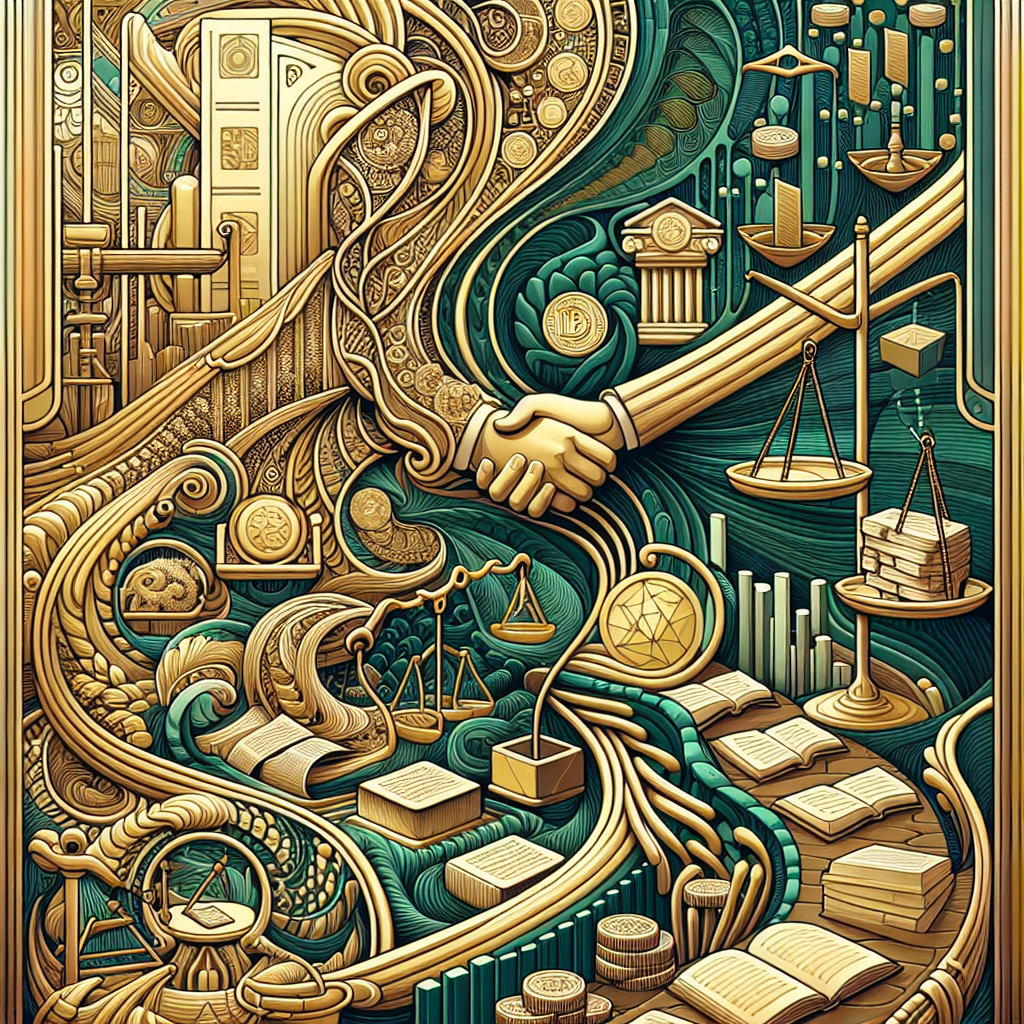Why Bailee Agreements Could Become the Foundation of Tokenized Finance

In the rapidly evolving world of digital finance, sometimes the most innovative solutions aren't new at all. As the tokenization revolution unfolds, a centuries-old legal concept—the bailee agreement—is emerging as potentially the most powerful foundation for compliant asset tokenization. While blockchain enthusiasts chase the next technological breakthrough, smart lawyers are dusting off legal textbooks from before the lightbulb was invented.
The Fundamental Challenge of Asset Tokenization
The core problem in tokenizing real-world assets (RWAs) has always been bridging the gap between physical assets and their digital representations. This challenge manifests as the custody-ownership separation problem: how to create a legally sound arrangement where a custodian holds a physical asset while token holders maintain ownership rights.
This is where bailee agreements enter the picture—and they've been solving similar problems since medieval times. Not bad for a legal concept that predates electricity.
What Exactly Is a Bailee Agreement?
A bailment is a legal relationship in which one party (the bailor) transfers physical possession—but not ownership—of property to another party (the bailee) for a specific purpose and period. The classic example is valet parking: you (the bailor) give your car keys to the valet (the bailee), who takes temporary possession but not ownership of your vehicle.
In traditional finance, bailments are everywhere: safety deposit boxes, warehousing contracts, consignment arrangements, and shipping services are all governed by bailment principles.
The Lumia Implementation: A Case Study in Tokenized Bailments
Blockchain project Lumia has pioneered the application of bailee agreements to tokenized hard commodities, creating a model that could become the industry standard. Their approach includes:
- Customized agreements for different asset classes, accounting for storage requirements and physical characteristics
- Regular third-party verification and audits of the physical assets
- Smart contract integration to digitize key aspects of the bailment relationship
- Clear redemption mechanisms allowing token holders to claim the underlying physical assets
As one Lumia document notes, these agreements provide 'legal certainty, enhanced trust, and scalability'—three elements desperately needed in the tokenization space.
Why Bailee Agreements Could Revolutionize Tokenized Finance
1. Legal Certainty in an Uncertain Space
The beauty of building on bailment law is that it's remarkably stable and well-established across common law jurisdictions. Courts have spent centuries refining the rights and responsibilities of bailees and bailors. This maturity provides legal certainty in the otherwise murky waters of crypto regulation.
In other words, when your innovative financial product is based on legal principles older than most countries, judges tend to understand how to handle disputes. That's more than can be said for most blockchain innovations.
2. Perfect Fit for the Custody Challenge
The bailment relationship perfectly matches the custody requirements of tokenized assets. The bailee (custodian) has clear responsibilities to maintain and protect the asset, while the bailor (represented by token holders) retains ownership rights.
This arrangement solves several problems at once:
- Establishes clear custody chains for compliance purposes
- Creates transparency about who holds the physical asset
- Defines the standard of care required for the custodian
- Sets clear procedures for asset redemption
3. Regulatory-Friendly Architecture
Regulators understand bailments. This familiarity provides a conceptual bridge between traditional financial oversight and the new world of tokenized assets. When regulators can see that an arrangement follows established legal principles, approval processes become smoother.
This is particularly important as jurisdictions like the UAE and Australia develop regulatory frameworks for tokenized assets. Bailee agreements provide a ready-made legal structure that can be adapted to local requirements.
As one industry insider commented (with perhaps a touch of exaggeration): 'Regulators don't understand NFTs, but they've been dealing with warehouse receipts since before central banking existed.'
Implementation Challenges
While bailee agreements offer elegant solutions to many tokenization challenges, implementing them isn't without difficulties:
1. Jurisdiction-Specific Requirements
Bailment law, while conceptually similar across common law jurisdictions, has jurisdiction-specific nuances. Companies operating globally need to adapt their agreements accordingly.
2. Smart Contract Integration
Translating legal concepts into code remains challenging. Smart contracts must accurately reflect the terms of the bailment while remaining technically robust.
3. Verification and Audit Procedures
Regular verification of physical assets is essential for maintaining trust but can be logistically complex and expensive. Standardized audit procedures need development.
The Future of Tokenized Bailments
As the tokenization industry matures, we're likely to see standardized bailee agreement templates emerge for different asset classes. Law firms specializing in these arrangements will develop expertise in bridging the traditional legal and blockchain worlds.
Industry consortia are already working on best practices for implementing bailee agreements in tokenized finance, with a focus on:
- Standardized contract templates for different asset types
- Common audit and verification protocols
- Integration patterns for smart contracts
- Cross-jurisdictional compliance frameworks
Conclusion: Old Legal Wine in New Digital Bottles
The emergence of bailee agreements as a foundational element of tokenized finance reminds us that innovative technology often relies on established legal principles. While blockchain technology is revolutionizing asset representation and transfer, the underlying property rights and custody relationships remain grounded in centuries-old legal concepts.
For investors, developers, and legal professionals in the tokenization space, understanding bailment principles is becoming essential. The most successful tokenization platforms will likely be those that effectively combine cutting-edge technology with these time-tested legal structures.
As we build the financial system of tomorrow, we're finding that some of the most valuable tools have been in our legal toolkit all along. Sometimes the future depends on understanding the past—even in an industry obsessed with the next big thing.
Your lawyer should be studying up on bailee agreements now. The tokenized future may depend on it.




